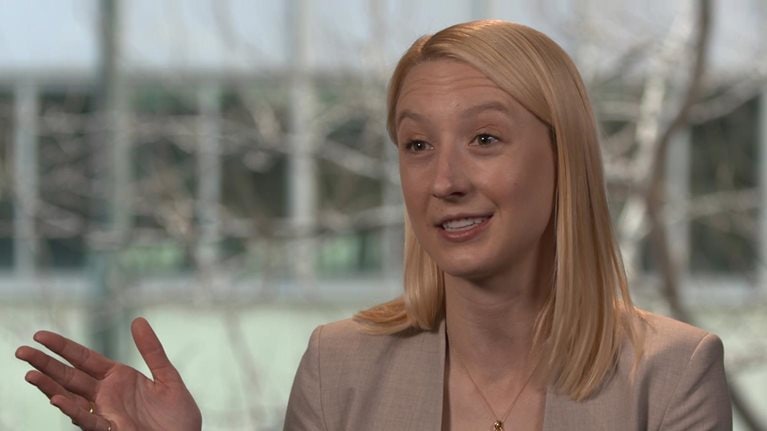Personalization is ready for its closeup moment. Technology and customer expectations are converging to propel personalization—the process of using data to customize the timing, content, and design of every experience in real time—from a promise to a reality.
Stay current on your favorite topics
Personalization at scale can drive between 5 and 15 percent revenue growth for companies in the retail, travel, entertainment, telecom, and financial-services sectors. One global retailer, for instance, saw sales from its brand-owned stores triple in just a year thanks to a successful personalization initiative.
For this reason, more than 90 percent of retailers say personalization is a top priority. But only 15 percent of these companies believe they are actually doing a good job at it.1 Consumers who have been stalked by irrelevant ads or bombarded with outdated offers would agree.
While many companies have scored a few modest successes with their personalization experiments and initiatives, few know how to do it on a large and consistent scale across all channels. Most companies focus exclusively on data, analytics, and agile, while investing very little in the necessary organizational and operational rewiring of how people work. Personalization is still treated like a nice add-on to a company’s existing marketing function.
We believe, however, that driving substantial and sustainable growth through personalization requires embedding it into the marketing operating model. To do this, companies must move beyond the initial excitement of “one-to-one marketing” and into the low-thrill but crucially important realm of organizational change.
What is the personalization operating model?
An operating model driven by personalization requires four elements to work together effectively:
- Data foundation: Building a rich, 360-degree view of customers in real time
- Decisioning: Mining data to identify and act on signals along the consumer journey
- Design: Crafting the right offers, messages, and experiences at speed
- Distribution: Delivering and measuring these experiences across platforms and feeding new insights into the data foundation
The real source of value in this operating model is how each element interacts with the others. Insights from the data allow the business to know how to design offers in response to customer signals. The more this operating model works, the more it improves by continually feeding more data into the model and refining its activities.
Would you like to learn more about our Marketing & Sales Practice?
While each of these individual elements has been well chronicled, none is particularly effective in isolation. Only by developing and deploying an integrated personalization operating model that enables a faster and more effective way of working can businesses hope to capture their full growth potential.
How to develop your personalization operating model
Building a personalization operating model requires business leaders to invest in six foundational elements: processes, tools and tech, governance, KPIs, talent, and leadership (exhibit). Implementing and embedding these elements is complex, requiring dedicated commitment, focus, and problem solving. We want to isolate a few of the most common pitfalls that cause companies to falter and suggest solutions for how to address them.

1. Process: Commit fully
What can go wrong: Not long ago, the CEO and CMO of a travel company decided to make a big push into personalization. Despite selecting a strong group of seven people and working in an agile way, they had little to show after six weeks. The problem was that the selected employees weren’t working in the same place and, after attending the daily stand-ups, were going back to their normal jobs.
Solution: Since an agile working team is the core component of a personalization program, it’s essential to get it right. At the most basic level, this means assigning a small group of carefully selected people—including a campaign manager and staff from creative, digital media, analytics, operations, and IT—to be full-time members of each agile team. Personalization is going to fail if it’s a side job. Unified around a shared goal, the team also needs authority and stature to succeed. Process improvements should include:
- Giving decision-making rights to the team and empowering them with critical resources, such as a promotional budget
- Staffing the team of 8 to 15—no more than can be fed by two pizzas—with “doers” not managers
- Colocating team members so they can work side by side all day
- Appointing a team leader who helps everyone work toward a shared vision and goals
- Developing new service-level agreements (SLAs) with internal and external departments, partners and vendors to make sure they can match the timelines of the agile team
The travel company colocated its personalization team members and removed many of their other responsibilities. In addition, it gave the team immediate access to creative-design resources from the marketing department (through new SLAs), speeding up the creation and testing of new marketing campaigns. As a result, the number of pilots launched in a given month more than tripled.
2. Governance: Be clear about boundaries and decision rights
What can go wrong: A global telecom provider recently put a personalization team in an agile “war room” only to find out that business-as-usual (BAU) channel functions, such as e-commerce, were launching conflicting tests. Without clear boundaries, decision rights, and responsibilities, creating personalization teams can result in unexpected clashes with other parts of the business.
Solution: A control-tower function is needed to manage the inevitable collisions between multiple agile teams and BAU groups. This new function is run by a manager and a small staff of people who have responsibility for tracking, anticipating and solving problems, and maintaining a centralized testing pipeline with common prioritization logic. They are also responsible for navigating and facilitating the very real organizational and political conflicts that arise from having multiple cross-functional teams within a legacy organization.
In practice, that means developing agreements with legacy groups on testing and release protocols, meeting regularly with affected functions to maintain good relations, and being transparent through regular communications to breed trust.
3. Tools and tech: Give people new shoes so they can run faster
What can go wrong: A consumer-goods company started its personalization transformation the right way. Management had aligned on the strategy, defined the consumer priorities it wanted to execute on, and committed the right set of doers and leaders to drive the change. The first pilots launched rapidly, but not long after, the scaling up of successful pilots stalled. The IT department had promised a new set of tools that would enable a perfect 360-degree view of the consumer, the creation of campaigns across channels with few easy clicks, and a fully automated decisioning engine to reduce manual list-pull work and targeting frictions. When this didn’t happen on time, the agile team was forced to measure campaign performance manually, which often didn’t generate results until 7 to 12 days after a campaign was completed.
Solution: Numerous off-the-shelf tools exist to help the process of personalization run with the numerical precision of a finance department. “We now see marketers use experience templates created by their agile development teams and user experience designers to shorten the loop between idea, launch, and measurement from months to days, and even sometimes hours,” says Liad Agmon, CEO of Dynamic Yield, a leading-edge decisioning-engine platform that delivers cross-channel personalization.
Automating list pulls, enabling versioning with dynamic templates, and creating easily searchable creative-asset libraries can reduce daily frictions while real-time measurement capabilities accelerate testing and learning. At the core of the personalization tech is a centralized decisioning engine, or “brain,” that is capable of interacting with each outlying system to consistently make real-time decisions based on consumer signals. This technology can coordinate content offers across audiences and channels in real time and help teams adjust them based on feedback.
In addition, companies are investing in customer-data platforms to unlock the data trapped in multiple silos. These investments have the additional benefit of freeing up teams from low-value activities so they can focus more on developing great customer experiences.
4. Key performance indicators (KPIs): Focus on both small and big outcomes
What can go wrong: The personalization team at a national retailer quickly developed a set of personalized triggers targeting customers during key moments when it seemed there was a strong intent to make a purchase. The campaign was successful and drove incremental sales. But subsequent campaigns drove limited value because the team either couldn’t agree on its focus or tried overly broad targets that led to multiple conflicting initiatives.
Solution: Personalization teams need a single, shared goal focused on solving a specific consumer challenge, such as the acquisition of an under-represented consumer segment like millennials, a boost in cross-selling, or improved engagement with new customers in their first 30 days. Without these kinds of strategic, consumer-centric KPIs, teams will fail because, without a shared purpose, they will focus on too many customer segments and moments in the journey.

Subscribe to the Shortlist
McKinsey’s new weekly newsletter, featuring must-read content on a range of topics, every Friday
At the same time, personalization teams can’t focus solely on the desired end result. The best teams identify near-term drivers that are going to help them get there, and assign bounties for employees as incentives to encourage user behavior (the dollar amount of the bounties varies greatly based on sector and goals of the program). These drivers could be the capture of a customer’s email address, a download of the brand’s app, log-ins to the site or mobile app, or a sign up for the loyalty program. A multibrand, multi-category retailer, for instance, used advanced machine-learning techniques to identify all the drivers of value and then assigned a dollar amount to each of them, which counted toward the team’s goal and each member’s personal compensation.
5. Talent: Foster long-term talent development and find all-around “athletes”
What can go wrong: For nearly a year, high-performing doers driving a company’s personalization agenda had been part of a dynamic and agile start-up environment. But there was little opportunity for advancement within the mostly hierarchy-free structure of the team, and no one was eager to simply return to his or her old job. The result was a rapid decrease in motivation over time, leading in some cases to a departure to work for other companies. Figuring out what to do with valuable employees is a challenge few companies spend enough time on.
Solution: Personalization teams should become the means to a promotion for highly skilled employees or a way for those with high-potential to build meaningful skills. In this way, war rooms act as mini business schools, enabling the acquisition of new skills, fluency in an agile way of working, and the understanding of how to act in a customer-centric way. When it’s time to move on to new challenges, team members should move up into a different team with a bigger mandate or be promoted into a leadership position within marketing or another department, such as strategy or merchandising. Effective career-path management should become the priority of the chief human-resources officer, with a focus on creating competitive compensation programs.
Creating attractive career paths and leadership opportunities also helps in recruiting the different types of all-around “athletes” needed to staff agile personalization teams. Traditionally in marketing, for instance, there is one person who builds logic into the email system for campaigns, someone else who pulls the recipient lists, and another who does the quality assurance. On an agile personalization team, this is all the domain of one person.
6. Leadership: Make personalization a long-term reality
What can go wrong: After a few months of engaging with the energy and excitement of a personalization transformation, one company leader started to step back from the day-to-day management in favor of focusing on the next big thing. He was still involved but mainly tuned in to periodic updates about how the war room was progressing against its throughput and impact targets. Without active and ongoing leadership, a personalization program is likely to falter and suffer a slow death.
Solution: To ensure success, senior leaders need to make personalization not just a company priority but a personal one. They must demonstrate visible support and enthusiasm for it day in and day out for the many months it takes to really complete the transformation by:
- Maintaining a presence in the war room. Having leaders show up unannounced to daily stand-up meetings powerfully reinforces the message that this is the place to make things happen.
- Sharing ownership. Each leader in the steering committee (regional heads, the CMO, COO, etc.) should pick one or more personalization initiatives to champion each month. This means asking the team leader about it in one-on-one meetings, following up with various people within the organization to highlight its importance, asking about progress in broader group stand-ups, and publicly celebrating some of the early wins, even before the initiative is fully scaled.
- Empowering your teams. Although steering committees are still needed to oversee the performance and impact of personalization teams and to recommend course corrections, most decisions need to be ceded to the teams. The job of senior leaders is to empower teams by holding them accountable for outcomes and removing the obstacles and roadblocks that prevent them from achieving these outcomes.
To make sure management stays engaged beyond a few months, companies can embed goals (such as test throughput rates, incremental sales, customer retention) into a leader’s performance review.
The road to personalization at scale is bumpy, and senior leaders need to be in the car to help navigate unexpected twists and turns, not waiting at the end of the road for the car to show up—with your company’s future growth locked in the trunk.


